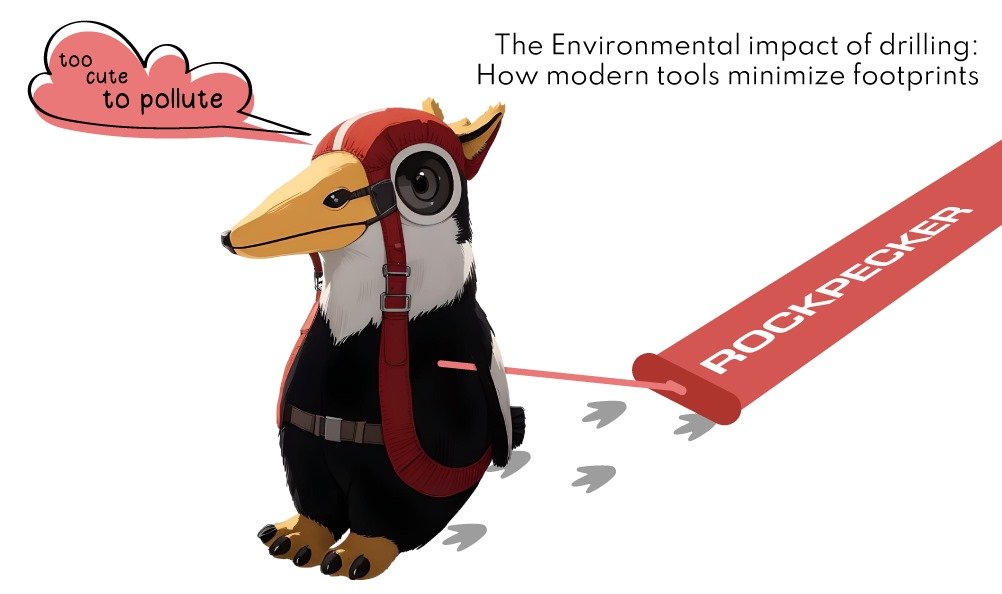Mitigating Drilling Impact: Minimizing Footprints with Modern Tools
/Introduction: Pursuing valuable resources through drilling has long been a crucial aspect of various industries, from mining to geothermal exploration. However, the environmental impact of drilling activities has increasingly become a concern. In this article, we delve into how modern drilling tools are playing a pivotal role in minimizing environmental footprints and ensuring a more sustainable approach to resource extraction.
Understanding the Environmental Impact of Drilling: Drilling activities, whether in mining, oil extraction, or geothermal exploration, have historically left a significant environmental footprint. The release of drilling fluids, disturbance of ecosystems, and the generation of waste materials are among the adverse effects.
Introduction of Modern Drilling Tools: In recent years, technological advancements have transformed the landscape of drilling operations, giving rise to a new generation of tools designed for enhanced performance and with a sharp focus on environmental sustainability. As industries strive to minimize their ecological footprint, the evolution of drilling tools plays a pivotal role in achieving these goals.
Amidst the diverse array of drilling tools, their suitability hinges on factors like the specific drilling operation, geological conditions, and environmental impact considerations. The following exploration unveils various types of drill bits commonly employed in modern practices, shedding light on how these tools contribute to reducing the environmental impact of drilling operations.
Rocky is too cute to pollute
It's important to note that the environmental impact of drill bits is not solely determined by the type of bit but also by the overall drilling practices. Best environmental practices include proper fluid management, waste disposal, and adherence to regulations. Additionally, advancements in drill bit design and technology are continually being made to reduce environmental impact. When choosing a drill bit, it's advisable to consider the specific requirements of the drilling operation and the environmental regulations in place.
Figure 1:Modern Drilling Tools to Mitigate Drilling Impacts
Figure 2: BITS to Mitigate Drilling Impacts
Reamer plays a crucial role in the drilling process by enlarging wellbores and ensuring proper hole size. These bits are designed to create a smooth and accurately sized borehole. Here are a few examples of reamer bits commonly used in drilling operations:
Figure 3:REAMERS to Mitigate Drilling Impacts
Figure 4: REAMERs to Mitigate Drilling Impacts
Figure 5: REAMERs to Mitigate Drilling Impacts
These tools aim to address key issues such as:
• Fluid Management Systems: One of the primary contributors to environmental impact is the use of drilling fluids. Modern tools incorporate sophisticated fluid management systems that minimize fluid demand, ensuring efficient cuttings flushing while reducing the overall volume of fluids needed.
• Waste Reduction Strategies: Traditional drilling methods often result in a substantial amount of waste material. Modern tools integrate innovative designs that optimize the drilling process, minimizing the generation of waste. This includes improved cutting evacuation systems and the use of advanced materials with longer lifespans.
• Precision Drilling Techniques: Precision is key to minimizing environmental impact. Modern drilling tools utilize advanced technologies such as directional drilling and real-time monitoring. These techniques allow for precise wellbore placement, reducing the overall disturbed area and minimizing habitat disruption.
• Integration of Sustainable Materials: The materials used in drilling tools are evolving towards greater sustainability. From recyclable components to the use of environmentally friendly lubricants, the industry is adopting practices that reduce the long-term ecological impact of drilling activities.
• Habitat Preservation Strategies: Drilling often takes place in ecologically sensitive areas. Modern tools are designed to minimize their impact on surrounding habitats. This includes the use of elevated platforms to avoid surface disruption and the implementation of practices that prevent soil erosion and habitat degradation.
Conclusion:
In the ongoing evolution of drilling technology, the shift towards environmental sustainability stands as a defining chapter. Modern drilling tools, with their focus on fluid management, waste reduction, precision drilling, and habitat preservation, mark a significant stride toward a more responsible era of resource extraction.
As technology advances, the trajectory is clear: a continued reduction in the environmental impact of drilling. This promises a future where we can extract Earth's resources with heightened responsibility, ensuring a legacy of innovation and ecological conscientiousness for the generations ahead.








